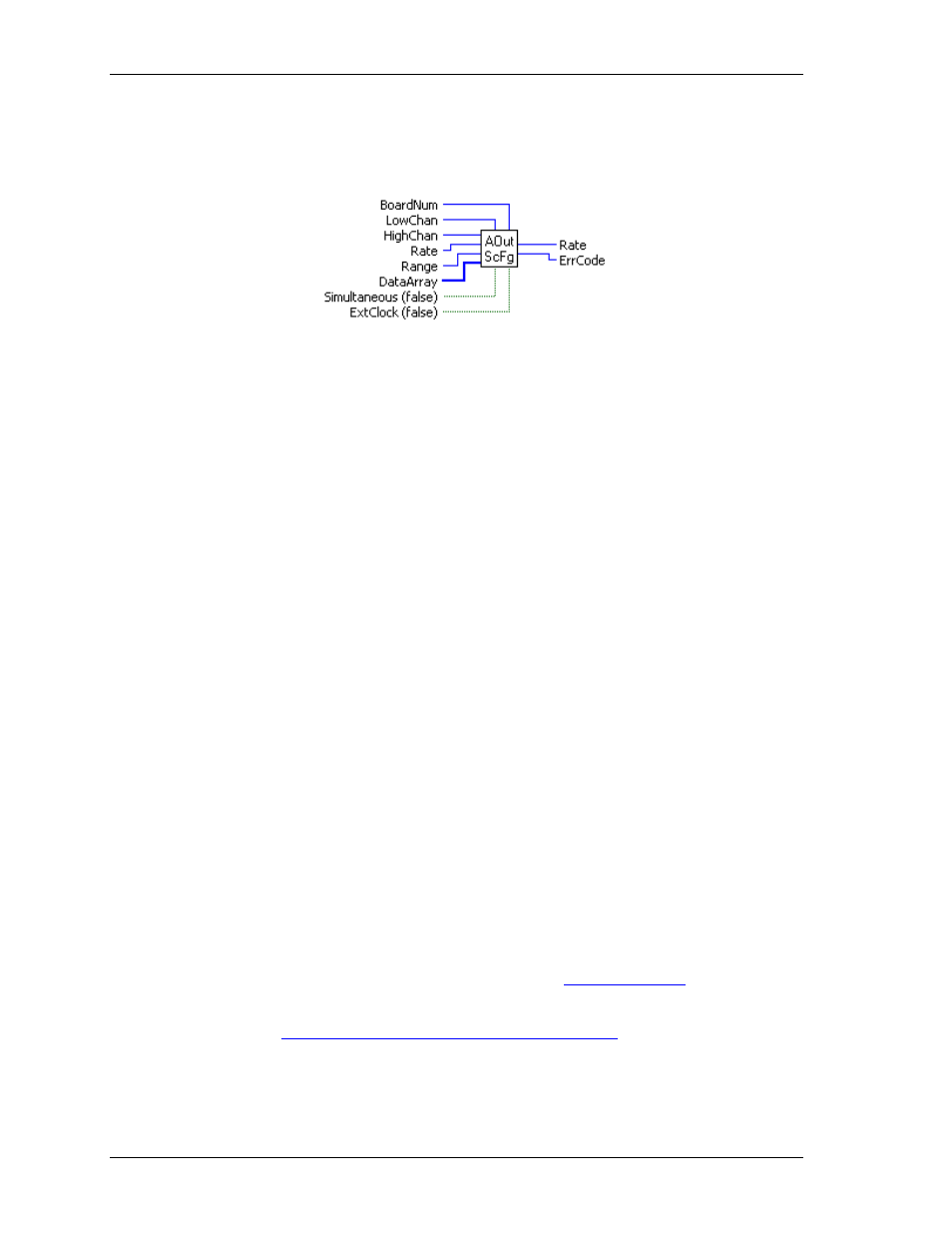Aoutscfg.vi – Measurement Computing UL for NI LabVIEW User Manual
Page 39

Universal Library Virtual Instruments (VIs)
Analog Output VIs
AOutScFg.VI
Outputs the values to a range of D/A channels in the foreground.
Summary:
Inputs:
BoardNum
[U32] - The board number assigned when installed with InstaCal. Can
be 0 to 100.
LowChan
[I32] - First D/A channel of scan.
HighChan
[I32] - Last D/A channel of scan
Rate
[I32] - Sample rate in scans per second [U32]
Range
[I32] - D/A range code
Data
Array
[U16] - Data array to output D/A values from.
Simultaneous
[TF] - Simultaneous update mode
ExtClock
[TF] - Pace conversions externally
Outputs:
ErrCode
[I32] -Error code. See ErrMsg.VI
Rate
[I32] - Actual output rate in samples per second
Arguments:
BoardNum
The board number associated with a board when it was installed with InstaCal. The
specified board must have a D/A.
LowChan
First D/A channel of scan.
HighChan
Last D/A channel of scan.
Low/High Channel #:
The maximum allowable channel depends on which type of
D/A board is being used.
Rate
(input)
Sample rate in scans per second. For many D/A boards the
Rate
is ignored and can
be set to
NOTUSED
. For D/A boards with trigger and transfer methods which allow
fast output rates, such as the CIO-DAC04/12-HS,
Rate
should be set to the D/A
output rate (in scans/sec). This argument also returns the value of the actual rate
set. This value may be different from the user specified rate because of pacer
limitations.
If supported, scans are triggered at this rate. If you are updating four channels, 0-3,
specifying a rate of 10,000 scans per second (10 kS/s) will result in the D/A
converter rates of 10 kS/s: (one D/A per channel). The data transfer rate will be
40,000 words per second; (4 channels x 10,000 updates per scan).
The maximum update rate depends on the D/A board that is being used.
Range
(input)
If the selected D/A board does not have a programmable range feature, then this
argument will be ignored. Otherwise the gain can be set to any of the ranges that
are supported by the selected board. See the "
valid values. Refer to board-specific information contained in the Universal
Library User's Guide (available on our web site at
r the list of ranges
supported by each board.
DataArray
Must be in the range 0 – N, where N is the value 2
Resolution
- 1 of the converter.
There should be at least
HighChan
-
LowChan
+1 elements in the array.
39
